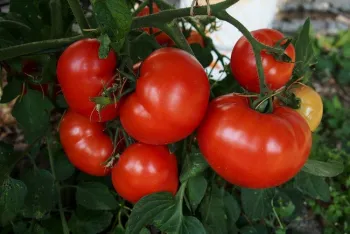CULTIVAR: a plant variety that is produced through selective breeding.
There is a long history of plant breeding to maximize certain characteristics.Orchids and roses are good examples of plants bred for disease resistance, color, and form. Vegetables and fruits are bred for disease resistance, sugar content or taste, tolerance of drought, and limited “chill” hours.
Scientists, horticulturists, and everyday “plant geeks” have been playing with plant genetics for thousands of years in search of the “best” tomato and the “prettiest” rose. It doesn't always work. Sometimes the result of their efforts produces tomatoes with low yield and no taste, or a rose that smells terrible, produces few blooms, and quickly succumbs to less-than-perfect weather conditions.

An acknowledged “cultivar” in the horticultural world is a combination of genetic material from two parent plants that produce desired characteristics in a sustained and stable manner. Cultivars do not produce seeds that result in exact replicas of the original plant. We regularly see cultivars in the grocery store and plant nursery. Think of all of the different roses that are available. Think of how many different apples are displayed: reds in many shades and sizes, yellows, goldens, greens. Each cultivar has consistent taste, texture, color, harvest time, etc. Therefore, you can make choices to meet your needs and preferences: eating out of hand, baking, etc. Think of all the different “kinds” of tomatoes you can grow! In the grocery store your choices are “varieties”: cherry, Roma, heirloom, hothouse. These are not cultivars. Cultivars are the familiar names “Early Girl,” “Sweet 100,” “Beefsteak,” and the like.
The word “variety” is not the same as a cultivar but in the U.S., they are commonly interchangeable. But to a horticultural purist, the incorrect use of the term is a sin of significant proportion. You can buy fibrous begonias in pink, white, and red. These are varieties of the begonia species cultivar: fibrous or wax begonia.
Cultivars are identified very specifically on the name tag and in literature by international agreement/rules. A cultivar will be listed thus: latin botanical name of the species in italics, followed by the cultivar name (epithet) with single quotes, all words capitalized, standard font. Example: Solanum lycopersicum ‘Early Girl'.

